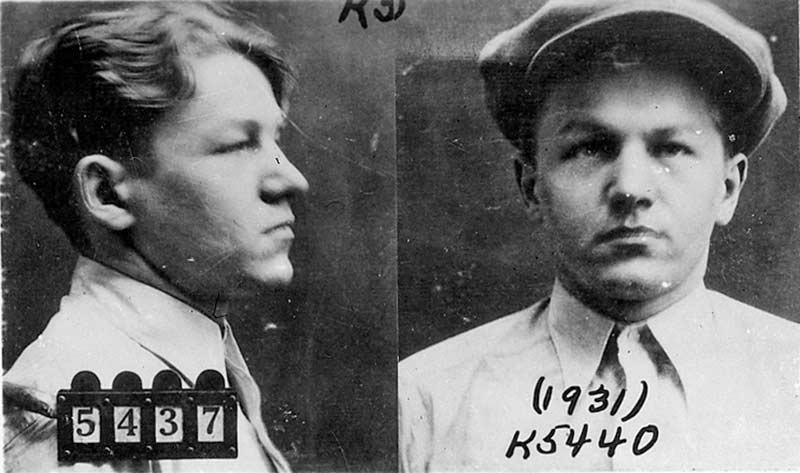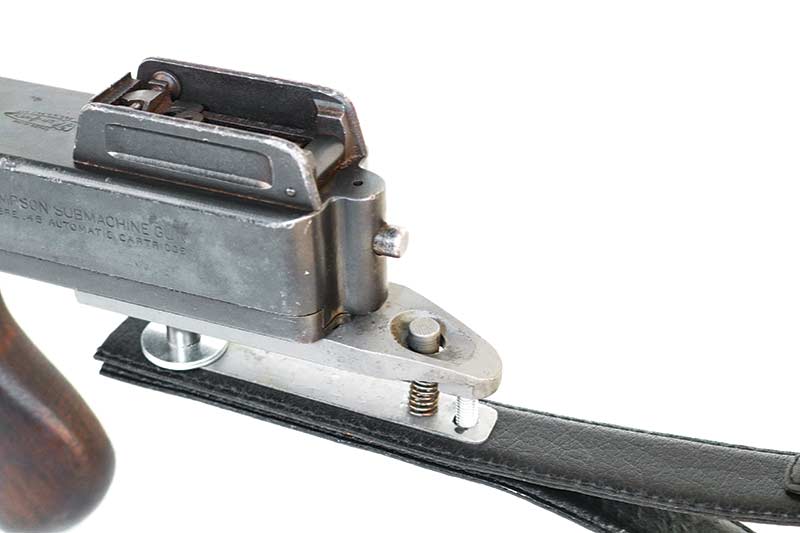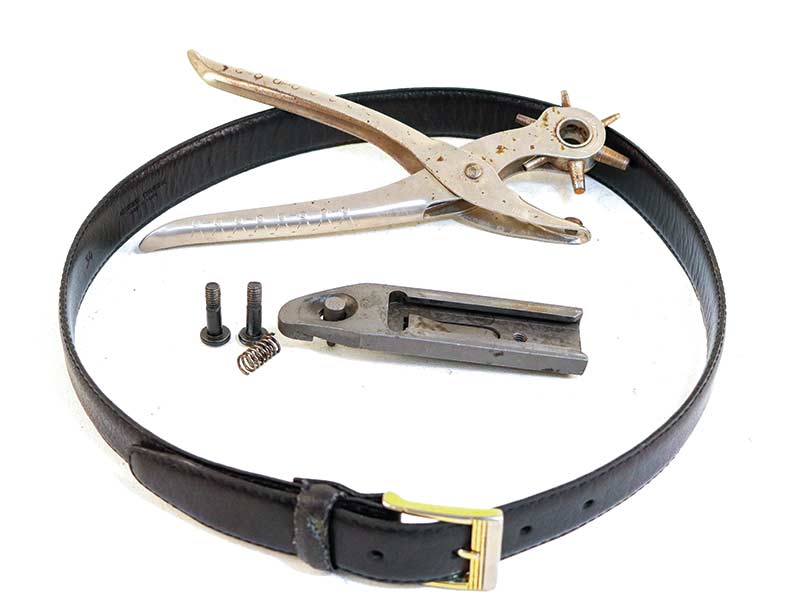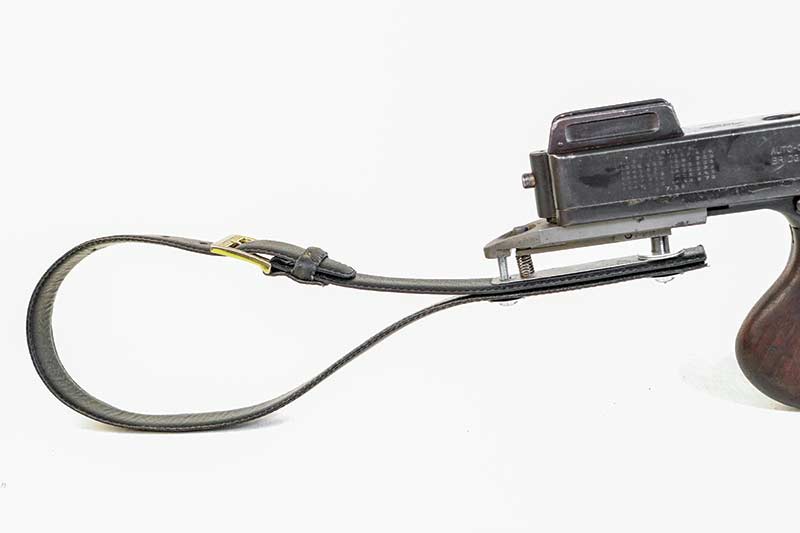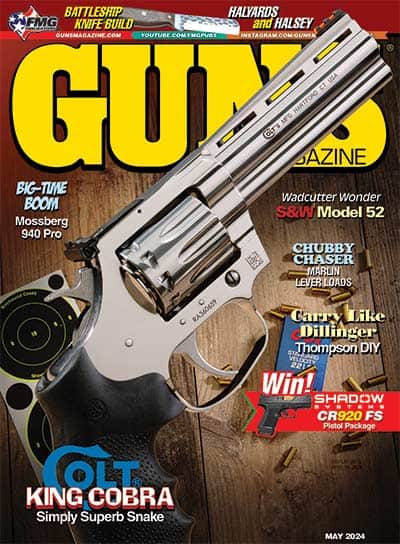Thompson Customization
Packing Heat Like Dillinger!
By the summer of 1934, life was getting tough for John Dillinger. The fame he had so vigorously courted now threatened to literally kill him. J. Edgar Hoover, Melvin Purvis and the FBI had declared him Public Enemy Number 1, placing a $10,000 bounty on his head — nearly a quarter million dollars today. In the throes of the Great Depression, this much money got people’s attention. Everybody in the country knew his name.
One Last Score
It was just before noon on a brilliant Saturday, and South Bend, Ind., was hopping. The town was preparing for its big Independence Day celebration. Locals of all ages were out living their lives. A brown Hudson coupe pulled up outside the Merchant’s National Bank and parked without arousing much interest.
Two of the four men exited the car and moved straight into the bank. They both wore long trench coats and carried oddly shaped parcels wrapped in pillowcases under their dusters. The other two, similarly adorned, posted themselves on either side of the front door to the building.
Once inside the crowded bank lobby, John Dillinger threw back his long coat, skinned his 1921 Thompson out of its pillowcase and loosed a burst of .45ACP into the ceiling. The distinctive chatter of the powerful submachine gun instantly put everyone in the bank on the floor. However, it also alerted a nearby patrolman named Howard Wagner, who came to investigate.
Wagner was packing a .38-caliber revolver in a full flap holster. Once near the building, he realized something was amiss and reached for his sidearm. In response, Homer Van Meter unlimbered his customized Winchester Model 1907 rifle and cut the lawman down. One of the heavy 180-grain bullets pithed the cop’s entrails, tore through a kidney, and spent itself on the countryside beyond. Patrolman Wagner fell where he was shot, bled out and died. Van Meter’s associate, George “Baby Face” Nelson, then threw off his long coat to expose a 1921 Thompson of his own equipped with a 50-round drum magazine.
By now, Dillinger and his associate inside the bank nearly had their pillowcases filled with cash. However, all the gunfire brought the townspeople out in force. Many of them were armed.
A local jeweler named Harry Berg stepped out into the street, leveled his handgun and fired, striking Nelson squarely in the back. However, the gangster’s bulletproof vest caught the round. Now enraged, Nelson torqued down on the trigger of his Thompson and sprayed the neighborhood. Berg made it back into his shop safely, but at this point, the world’s manliest teenager joined the fray.
Joseph Pawlowski was only 16 years old. However, he nonetheless leaped onto Nelson’s back and began beating him about the head and neck with his fists. In response, Nelson threw the kid through a plate glass window and gave him a quick squirt from his Tommy gun. Miraculously, save one round through his hand, young Joseph came through unscathed. He later grew up to become a concert violinist and symphony conductor.
The Gun
John Taliaferro Thompson spent most of his adult life in the Army as an Ordnance officer. He was directly responsible for the adoption of the .45ACP as the U.S. military’s standard handgun round. Thompson imagined his eponymous gun as a sort of “trench broom” with which Allied soldiers might sweep the WWI trenches free of the Huns. The first prototypes were available just as the war ended.
The Thompson was actually designed by a team of engineers and first produced in a single lot of 15,000 guns by Colt. These early M1921 Thompsons were things of mechanical beauty. They could be fed by either 20-round box magazines or 50- or 100-round drums. Later M1928 guns were externally identical save the markings, but they used a heavier actuator to effect a slower rate of fire.
The Thompson fired from the open bolt, utilizing a contraption of dubious effectiveness called the Blish Lock. This thing operated on a curious principle called stiction. Stiction is short for static friction and posits two dissimilar metals — in this case, steel and bronze — would exhibit a greater than expected frictional force when subjected to high pressures. It was a neat idea, but later military Thompsons functioned just fine without a Blish Lock at all. The Thompson sported separate levers for both safety and fire selection and weighed nearly 11 lbs. empty.
The Conversion
There is no photographic evidence of the specific configuration of the Thompson John Dillinger used to shoot up the Merchants National Bank in South Bend. However, in the superlative Johnny Depp movie Public Enemies, the gun is shown suspended from a shoulder strap of some sort with its buttstock removed. I thought it might be a fun project to create just such a rig in the unlikely chance I might ever wish to give up doctoring in favor of becoming a professional Depression-era highwayman.
The buttstocks on the M1921 and M1928 Thompson are readily removable. Just depress the button at the top and the stock slides free. The stock of the later M1A1 military Thompson was fixed in place. It could be removed but only with a screwdriver.
While live Thompson submachine guns are just stupid expensive, spare parts remain surprisingly plentiful. Properly marked original M1921 components are essentially “unobtainium” but the same bits taken from wartime M1928 guns are fairly easy to find. I needed to look no further than Gun Parts Corporation to find a replacement M1928 stock mounting iron.
This component consists of a sliding tray mating to the back of the Thompson receiver along with the release lever and push button. In the original gun, there is a spring underneath the release button captured by the wooden stock. When I ordered the mounting iron, I also picked up the lever spring and two associated screws.
To make this thing work for this unintended purpose, I needed to craft a base to retain the spring and mount the support strap. This was just a simple piece of scrap steel with holes drilled for the mounting screws. I also drilled a hole to accommodate the release lever guide. I harvested the steel stock from an old oil drum and hammered it flat.
I needed a piece of leather for the support strap as widespread use of synthetics like nylon was still several years away. I found an old leather belt I could live without in my closet, cut it to length and punched corresponding holes with my leather punch. A couple of washers spread the stress out a bit. The end result comfortably rides in my armpit like it was born there.
Trigger Time
Though just sinfully heavy when fully loaded, the Thompson submachine gun remains a shockingly effective close-quarters tool. With the stock removed, the gun really is compact, while .45ACP at 850 rpm means not having to say you’re sorry in any of the world’s recognized languages. The drum is indeed quite bulky underneath a long coat, but with a stubby little 20-round box in place, you could pack this street howitzer under a decent jacket in a crowd without anyone being the wiser.
In action, the gun remains quite controllable. The matching front and rear pistol grips do a splendid job of interfacing with the human form. Running it on the sling while applying forward pressure is not conceptually dissimilar to the accepted method of employment for the modern HK MP5K micro-submachine gun. At across-the-room ranges, the Thompson thusly configured would be a force of nature.
The Rest Of The Story
Alas, being a Depression-era gangster had a lousy retirement plan. As the four bank robbers made their way back to their waiting car, the accumulated cops and armed civilians opened fire. Most of their rounds struck hostages, but one connected with Van Meter. Dillinger’s loyal sidekick caught a .22-caliber slug to the forehead right at the hairline. This zippy little bullet then tracked around the man’s skull to exit out the back without penetrating anything vital. It did, however, leave the inveterate killer in a mighty foul mood.
The four shaken gangsters roared off with the local cops in hot pursuit. The policemen paced the criminals for some 45 minutes until a handful of roofing nails tossed out the window blew their tires and disabled their squad car. The gang ultimately escaped to Chicago.
The fourth member of the crew has never been reliably identified. Theories abound, but no one is really sure who he was, even today. Dillinger made off with $29,890 or about $630,000 in today’s money. That’s not a bad haul for a single afternoon’s work.
A little more than a month later, the 28-year-old Van Meter was cornered by police in St. Paul, Minn. and cut down. Three cops with Thompsons emptied their weapons into the man after he fell. Van Meter’s relatives later complained the police had “used him for target practice.”
In November of 1934, FBI agents confronted Baby Face Nelson while he was driving a powerful V8 outside Chicago. In the firefight that followed, two FBI agents were killed. For his part, Nelson caught eight buckshot pellets to his legs and a single .45ACP Thompson slug to the abdomen that ultimately killed him.
Melvin Purvis and company gunned down John Dillinger outside the Biograph Theater in Chicago roughly a month after the robbery. About 15,000 people filed through the Cook County morgue the following day to ogle his cold corpse. Dillinger had been ratted out by his sort-of girlfriend, a local madam who went by the name Anna Sage. Sage will forever be known as “The Lady in Red” despite the fact that her attire on the fateful evening was actually an orange skirt and white blouse. Sometimes history is funny like that.


